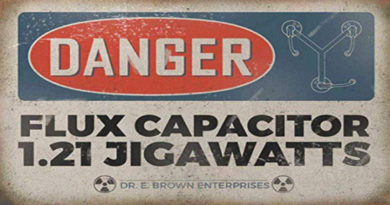Go Speed Racer, Go!
Ever since the dawn of time, humans have been hooked on speed. The first Olympics in 776 BC was all about running events to see who was the fastest. The winners got all the glory, while the losers didn’t fare so well.
Nowadays, some companies still think the only way to improve is to go faster. The telecom industry spends a lot of money trying to solve the “faster is better” problem.
Here’s the thing: Consumer demand for faster speeds is leveling off. In this article, I’ll argue that instead of focusing on maxing out speed, we should focus on making things more efficient and reliable. I’ll try to answer the question, “Do we really need another version of DOCSIS?” But that’s a big question that goes way beyond what I can fit into a 1200-word article. I’ll give it a shot, but expect this to be the first in a series of articles where I’ll ask and hopefully answer the question, “How much speed is enough and for how long?”
The plateau of consumer demand
Here’s what the data says: Data growth is slowing down. For example, typical real-world DOCSIS 4.0 download speeds can reach up to 500 Mbps per second, and some studies say DOCSIS 5.0 could go even faster, to even 50 Gbps per second. However, everyday apps that need more than 1 Gbps per second don’t exist today. Most users find that speeds of around 100 Mbps are good enough for gaming, browsing, streaming, and video calls. If you look at the average user at peak hours, you’ll see that they’re using about 5 Mbps downstream and 500 kbps upstream.
Even super-fast apps like Microsoft’s Flight Simulator 2024 only need 200 Mbps, way less than the max speeds of DOCSIS 3.1, DOCSIS 3.1+, and DOCSIS 4.0. Emerging tech like AR, VR, and self-driving cars won’t need more data than DOCSIS 4.0 can handle. The metaverse, though it sounds big, only needs 100 Mbps to 1 Gbps, which DOCSIS networks can already provide.
So, how far should we push DOCSIS?
Let’s rethink bandwidth
The telecom industry has always thought we needed more bandwidth, thinking more capacity would bring in more customers with faster speeds, new apps, and services. But that’s not proven true. Data shows that demand isn’t growing as fast as we thought. Instead, as I’ve said in the past, we should not focus on making existing networks faster. We need to make them better, more reliable, and cheaper.
In simple terms, there are only two things on the financial graphs: cost per bit and revenue per bit. Everything we do needs to deal with one or the other. Adding bandwidth raises the cost per bit, which means less profit for the company, and we need to carefully consider that.
This concept fits with the idea that the telecoms industry might be moving from a fast-growing industry to something more like a utility, where the focus is on providing reliable and affordable service rather than chasing new tech. This has been talked about for a while, but it hasn’t really caught on at the federal level. I think it’s time for this change to happen.
This path will have a big impact on ongoing research. As I’ve learned over 30 years of working on DOCSIS specs, these things take time. Usually, from the idea to deployment, it takes eight to 10 years for specs, products, and deployment at scale. If the current tech will take cable into the 10 to 20 years, the money spent on developing next-gen cable tech might be better spent elsewhere for a while. Of course, there will still be the crazy experiments that lead to new possibilities, but the money spent on this will be much less.
Implications for the cable Industry
As people want more reliable services, the cable industry will need to change its plans. Equipment suppliers might focus more on making existing networks better and self-healing with AI/ML than on developing new tech to increase data rates. Cable operators should think about investing in improving current networks and customer service instead of just adding more bandwidth.
Regulatory bodies might also think about having fewer spectrum auctions and finding other ways to manage spectrum resources. Policymakers could focus on things like how many people have reliable broadband access, not just how many homes have access to high-speed networks.
The industry as a whole needs to change its focus from spending money on small things to spending it on things that matter to customers today, not something 10+ years from now.
Jeff’s three rules for keeping customers
I’m not saying all efforts to advance DOCSIS tech should stop. What I do suggest is that we focus more on keeping customers happy. To that end, my latest “rules for keeping customers happy” can be boiled down to these three:
- Stop making customers angry.
- Don’t take a knife to a gunfight.
- Here’s the thing: We should focus on giving customers what they need, not necessarily what they want.
Let me explain. When we upset customers by changing their pricing without giving them a heads up, we create a problem that didn’t need to happen in such a messy way. In today’s world of fiber Internet, service prices stay the same while you’re a customer. It’s only the fees and taxes that go up. No yearly increases to the base rate, no one-year contracts, no speed bumps, just plain old reliable and consistent service.
Now, I know what you’re thinking: “But what about the speed wars?” Well, let me tell you, taking a knife to a gunfight is never a good idea, no matter how good you are with a knife. The “gunfight” is the speed wars. As I’ve said before, we were happy to get into speed wars while we were ahead. But now, the telcos have fiber with a capacity of around 1.4 Tbps; cable is at a disadvantage in terms of total capacity, with a potential throughput of 10 Gbps in DOCSIS 4.0 or 50 Gbps in DOCSIS 5.0. Be Indiana Jones, not the poor guy with the broadsword.
In my opinion, giving customers what they want is the main idea of this article. As Internet services become more like utilities, it’s more about reliability and resilience than just speed. Just like a utility, it just has to work.
So, let’s keep our focus on what really matters to our customers. As Jeff’s rule #50 says:
“Customers buy speed once, they buy services every day.”
Now, let’s talk about what’s next. While the demand for higher throughput might be leveling off, there are still areas where we can improve. For example, expanding coverage in areas that don’t have good Internet is still a big challenge. Technologies like satellite Internet and FWA networks could help us solve this problem. Also, using artificial intelligence and machine learning to manage our networks could make things more efficient and better for our customers. AI-driven algorithms can help us route traffic better, predict when the network will get congested, and even personalize services to meet our customers’ needs.
That’s all for now. Let me know what you think!
Hey there! I’ve been thinking a lot about how the cable industry should approach the future of DOCSIS. Instead of just trying to get faster data rates, let’s focus on making our existing networks more efficient, reliable, and affordable. This way, we can make sure that all the tech advancements we make actually benefit our customers.
In my next few articles, I’ll dive deeper into this topic and share some ideas on how to move cable into the future while also managing the financial challenges and the needs of our customers.
Stay tuned!
[Author’s note: I’ve been working on this article for a while now, and recently, there was an excellent article in IEEE by William Webb that discusses a similar topic for telcos. Since our thoughts are pretty similar, I’ve tried to keep my thinking on cable separate from his article. I’m sure there might be some overlap, but it’s all unintentional. https://spectrum.ieee.org/6g-bandwidth].
 Jeff Finkelstein,
Jeff Finkelstein,
jlfinkels@gmail.com
Prior to retirement, Jeff Finkelstein was the Chief Access Scientist for Cox Communications in Atlanta, Georgia. He has been a key contributor to engineering at Cox since 2002 and is an innovator of advanced technologies including proactive network maintenance, active queue management, flexible MAC architecture, DOCSIS 3.1, and DOCSIS 4.0. His responsibilities included defining the future cable network vision and teaching innovation at Cox. Jeff has over 50 patents issued or pending. He is also a long-time member of the SCTE Chattahoochee Chapter and member of the Cable TV Pioneers class of 2022.
—
Images, Shutterstock




